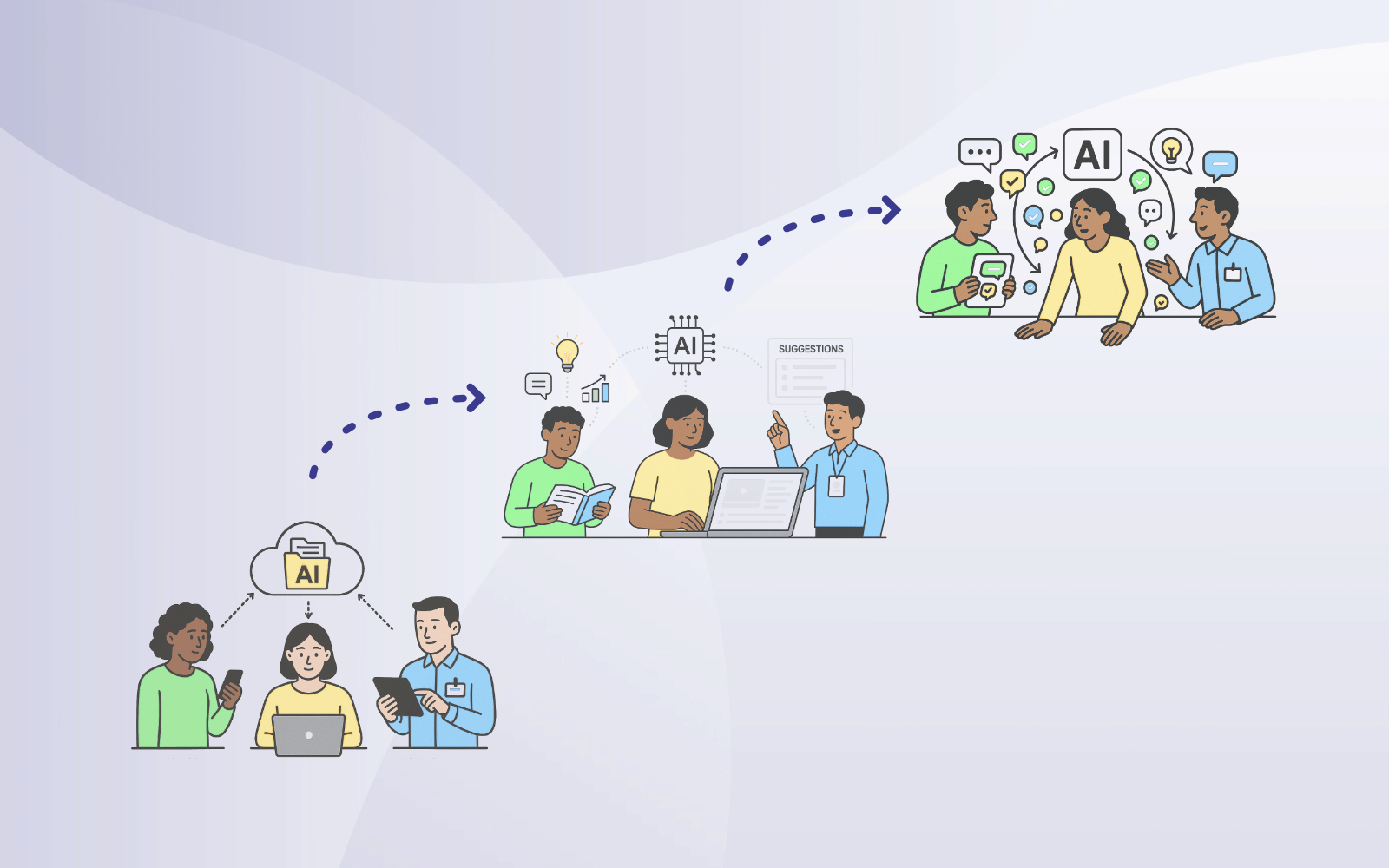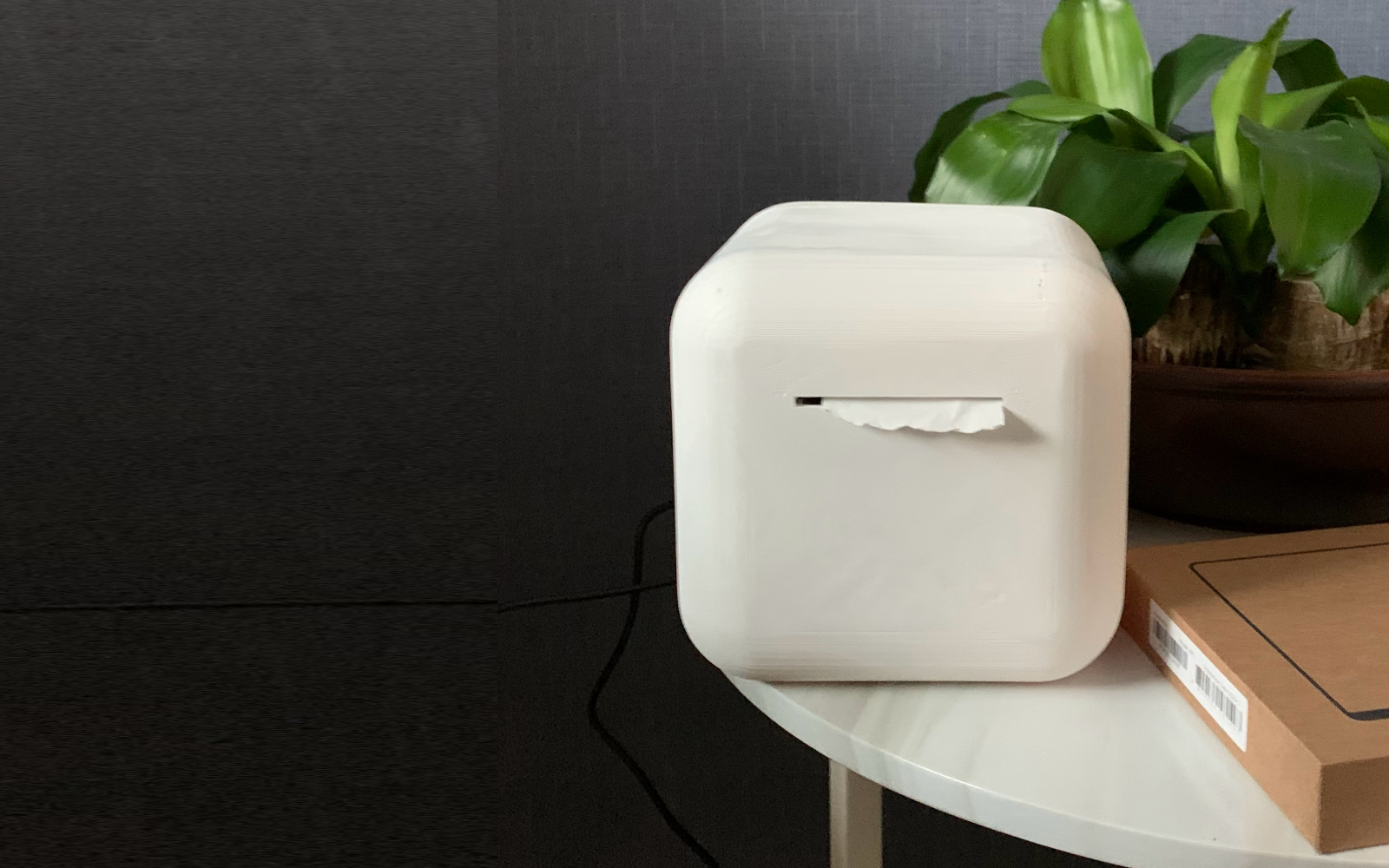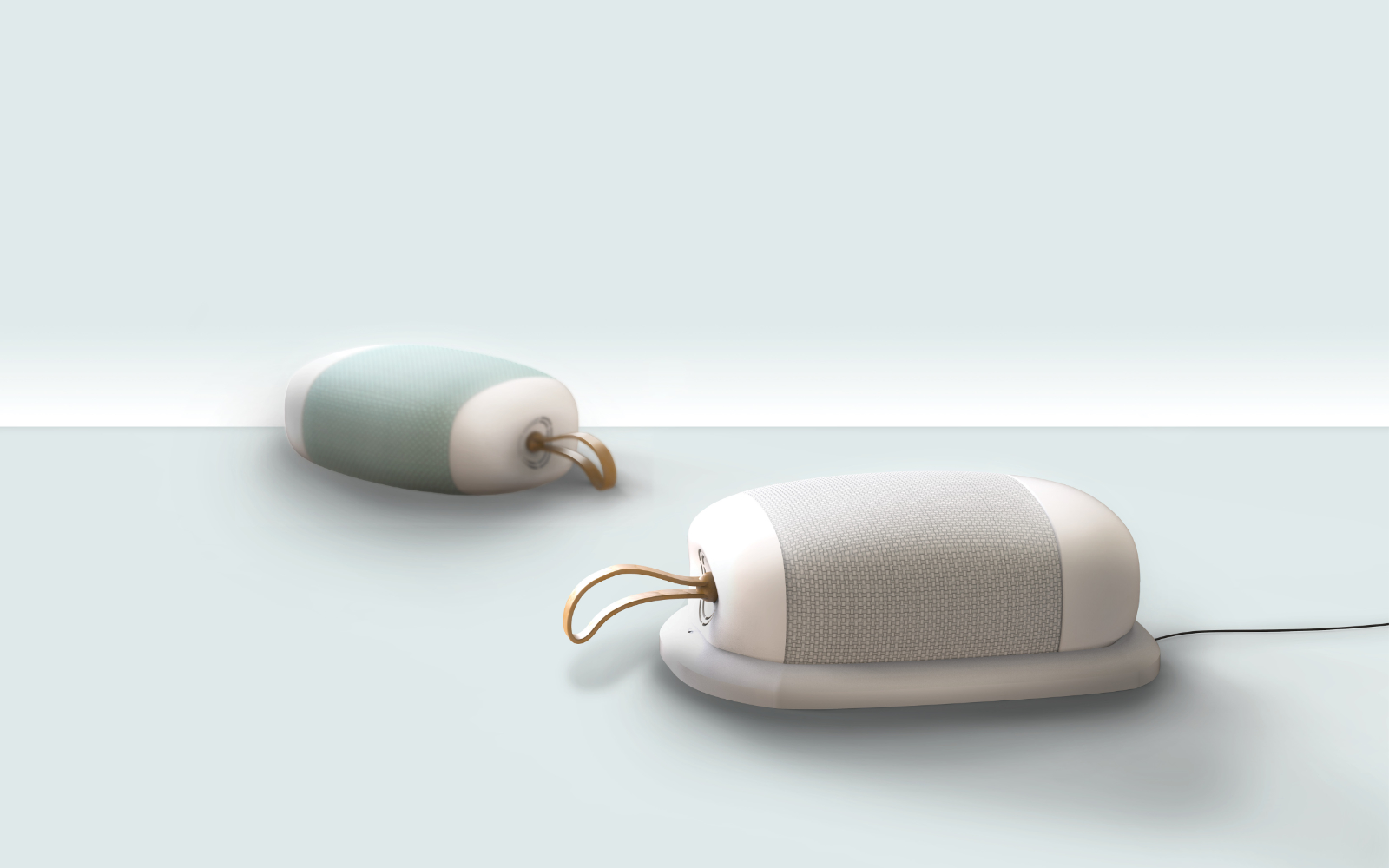Making the Hospital Hero app more inclusive for children with auditory or visual impairments
Hospital Hero helps children and parents reduce anxiety before, during, and after hospital visits through storytelling, mini-games, and a question notebook for doctors. Our project focuses on making the app inclusive for children with visual or auditory impairments—improving access without stigma and keeping the experience engaging. We combined literature, journey mapping, expert input (Visio and product experts), and concept iteration to propose tactile (haptic) interactions alongside an inclusive UI so that more children can prepare with confidence and autonomy.
Why inclusivity matters for Hospital Hero.
Hospital Hero is currently used in several Dutch hospitals to help children prepare for medical procedures through storytelling, mini-games, and interactive guidance. The app effectively reduces stress and makes hospital visits more playful and understandable. However, for children with visual or auditory impairments, many interactions remain highly visual and text-based, making the experience less accessible for those who may need support the most.
Research shows that children with sensory impairments often experience higher anxiety and less effective care without adapted tools. To explore this gap, we analyzed the existing Hospital Hero app journey across preparation, play, and reflection stages.
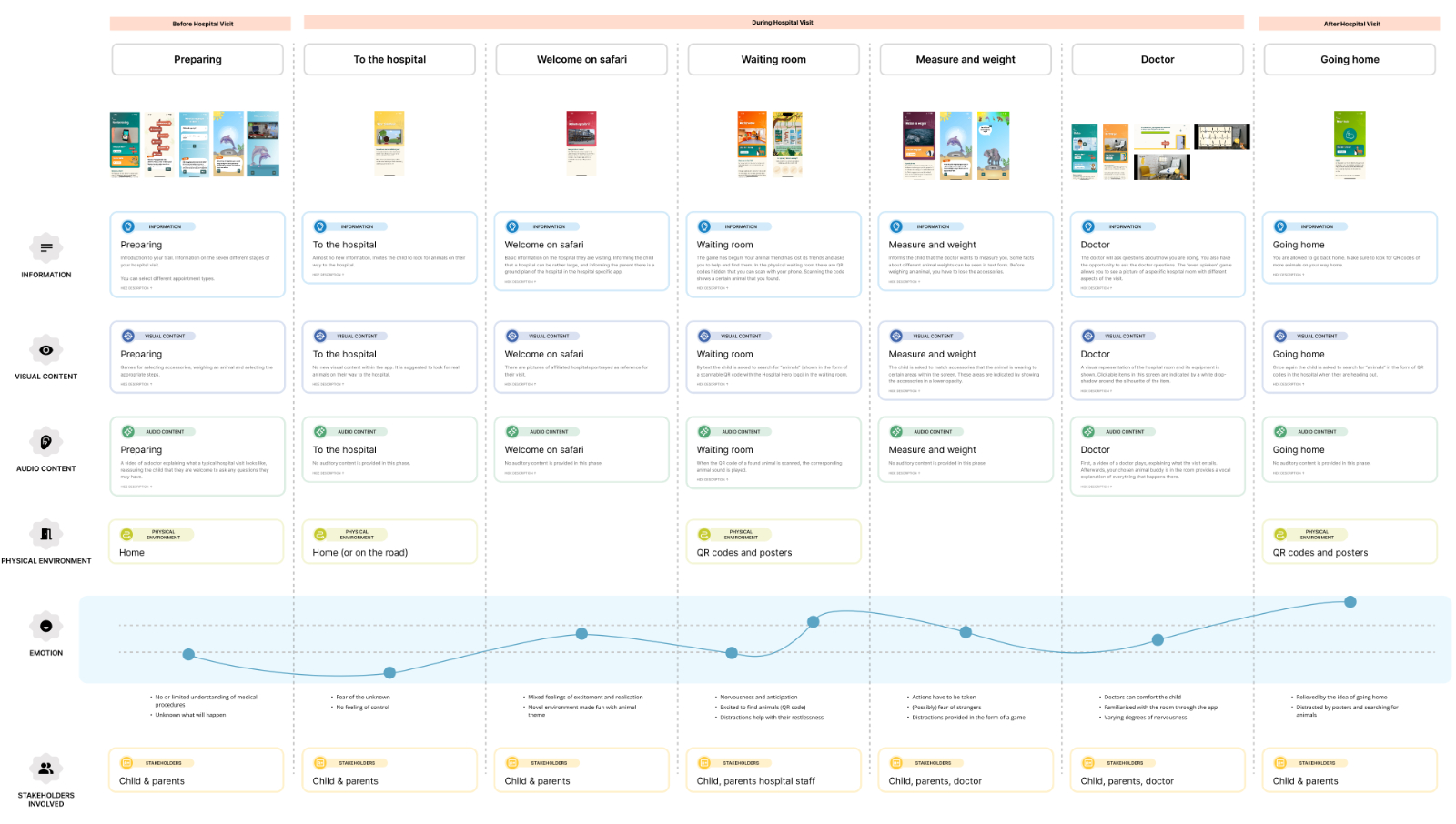
The mapping revealed heavy reliance on visual and textual content and limited audio or multisensory elements. This analysis established the foundation for redesign — aiming to make Hospital Hero more inclusive and engaging, empowering children with a sense of control, reducing uncertainty, and avoiding stigmatizing add-ons through seamlessly integrated multisensory design.
Exploring design opportunities through solution mapping and expert interviews.
Building on the app journey analysis, we applied two complementary methods — solution mapping and expert interviews — to identify design opportunities for a more inclusive and engaging Hospital Hero experience. The solution mapping analyzed existing assistive and inclusive technologies, from tactile products to accessibility-focused digital tools, revealing how multisensory and haptic interactions could enhance accessibility without introducing stigma.
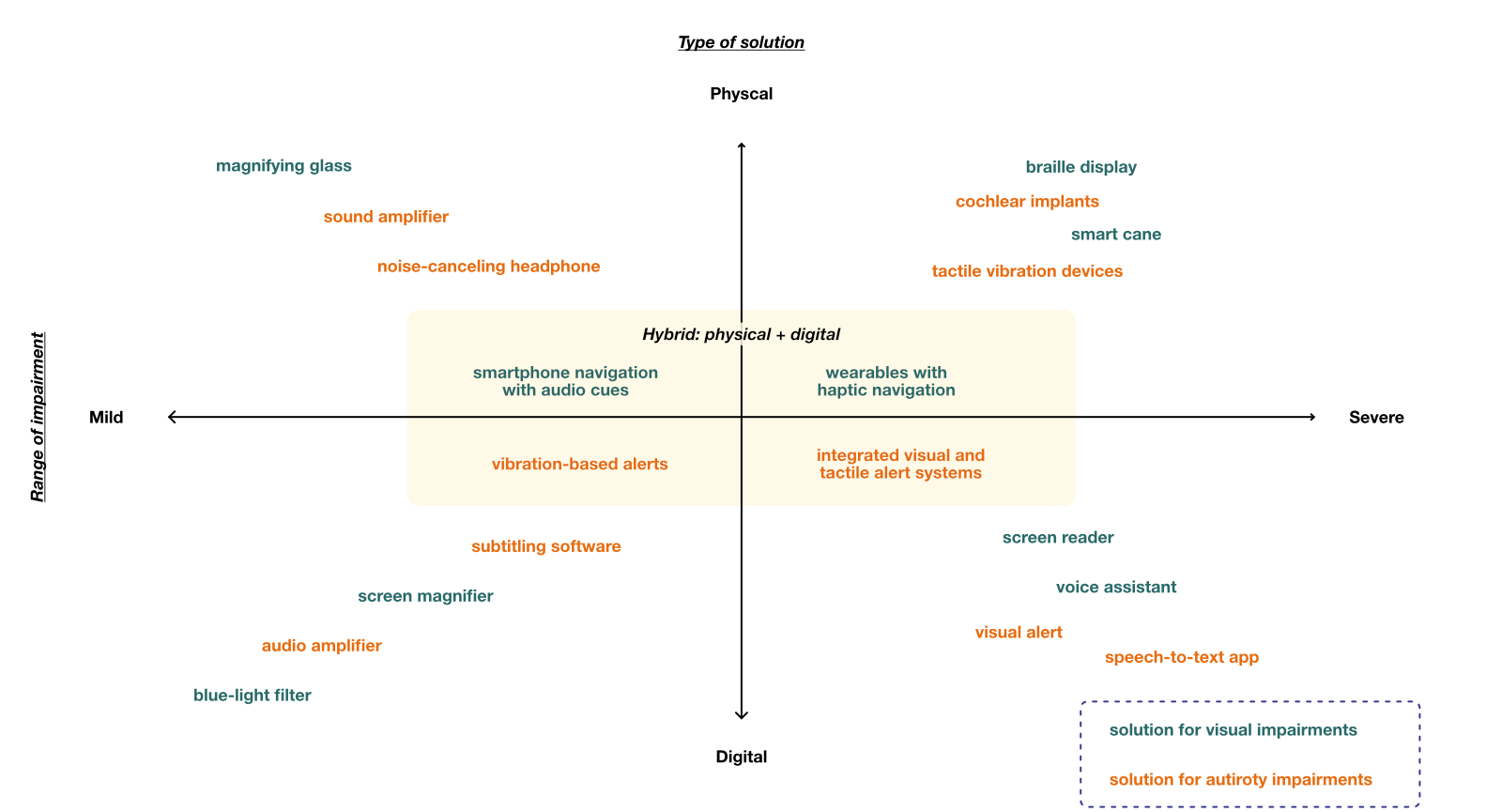
In parallel, expert interviews with specialists from Visio and the Hospital Hero co-founder provided practical insights into inclusive interface design, visual accessibility, and the usability of haptic feedback for children. These findings informed the inclusive design opportunities that guided the concept development.
Defining design requirements and goal.
The research synthesis led to four key design requirements that bridge inclusivity and engagement for children with sensory impairments: (1) Sense of control — enable children to anticipate and influence their experience; (2) Engaging — maintain playful motivation through multisensory and tactile cues; (3) Stigma-free — integrate accessibility features naturally rather than as separate add-ons; (4) Informative — support understanding and reassurance throughout the visit. (5) Improved journey — enhance the overall care experience by reducing uncertainty and increasing confidence.
Together, these requirements shaped the design goal: “Make Hospital Hero more inclusive and engaging by empowering children with a sense of control, reducing uncertainty through stigma-free design, and enhancing the overall healthcare experience.”
Tactile interaction and inclusive UI design ideas.
Based on the research insights and design requirements, a “How might we” ideation session was conducted to explore ways of making the Hospital Hero app more inclusive, engaging, and emotionally supportive for children with sensory impairments. The generated ideas were then organized through an idea mapping exercise to evaluate multiple concept directions along two axes — Inclusivity (how well each concept supports sensory needs) and Engagement (how effectively it reduces fear and enhances enjoyment for children). This process identified Tactile Interaction in the Hospital Journey as the primary concept and Inclusive UI Design as the sub-concept, combining high inclusivity and high engagement.

The primary concept explores how tactile (haptic) feedback can enhance accessibility and emotional engagement during hospital visits, while the sub-concept focuses on Inclusive UI Design that ensures visual clarity and personalization.
Holistic improvements toward a more inclusive experience.
The final outcome integrates Tactile Interaction and Inclusive UI Design into a cohesive multisensory experience that enhances accessibility, engagement, and emotional comfort for all children. Rather than adding isolated accessibility features, the redesign focuses on a holistic improvement of the entire app journey—from preparation to reflection—embedding inclusivity throughout both interaction and interface design.

The new Hospital Hero journey connects tactile feedback, sound, and visual adaptability across each phase of the hospital visit. These multisensory layers enable children to explore, understand, and navigate with greater independence and confidence, turning the hospital experience into an engaging and reassuring story.
.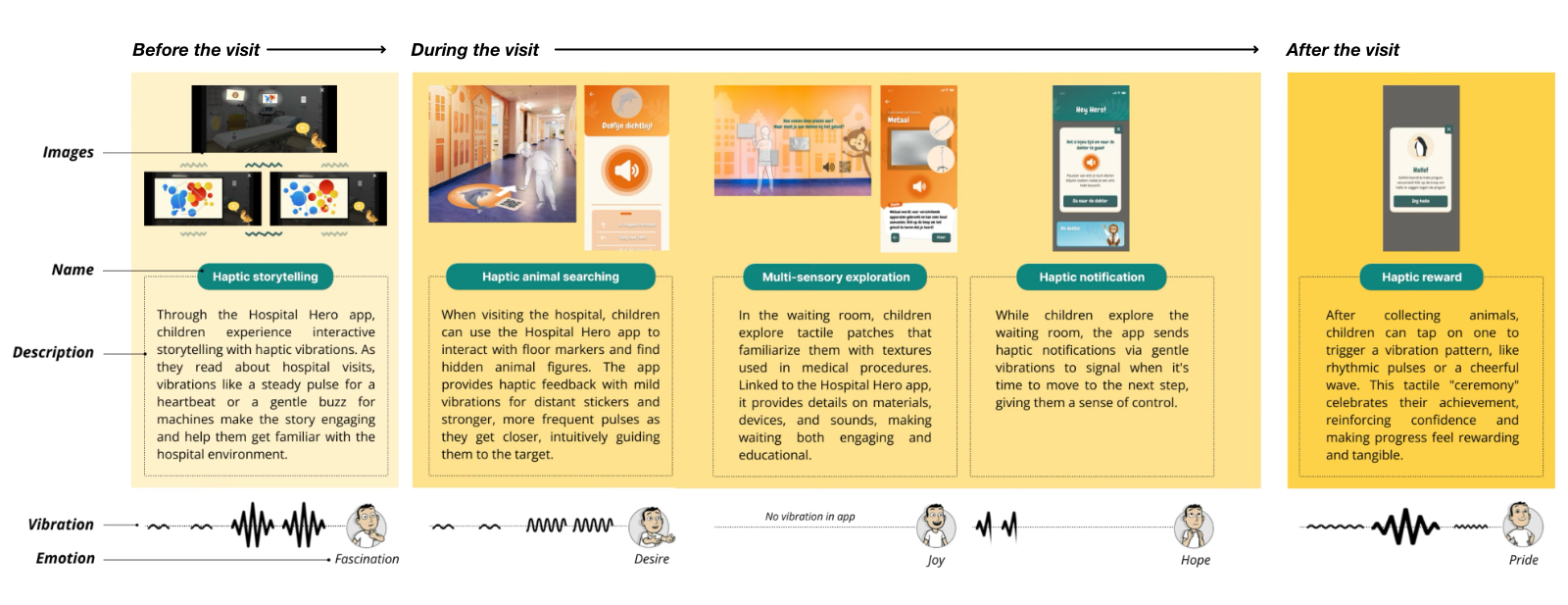
In addition, collaboration with experts led to the development of detailed inclusive UI guidelines to complement the tactile and multisensory improvements. These guidelines focus on ensuring accessibility through bright colour contrast, clear iconography, and legible typography while minimising distractions in the interface. They also recommend simple, high-contrast visuals, scalable text, and animated interaction cues to help children with visual or auditory impairments navigate confidently and independently. These visual refinements strengthen the holistic redesign of Hospital Hero, ensuring that inclusivity is embedded in both interaction and interface design.
